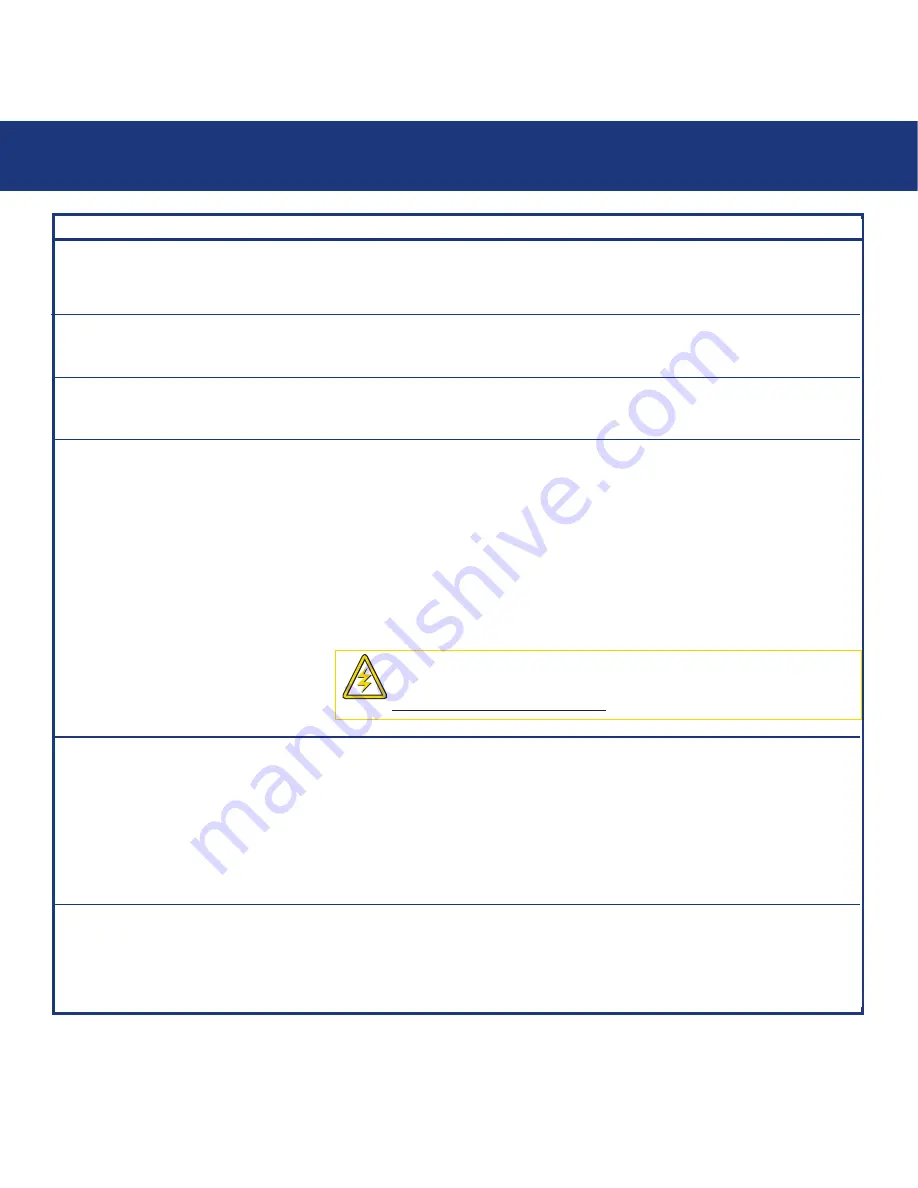
9. Troubleshooting
page 47
LaCie Biggest S1S
User’s Manual
The Problem
When I lock a Drive Bay into place,
the Disk Activity Indicator turns red
and the alarm beep sounds.
The alarm beep is sounding. How do
I turn it off?
The LaCie Biggest S1S does not
appear in the BIOS.
What should I do in the event of a
disk failure?
Using the existing disks, I want to
create a new RAID array.
The LaCie Biggest S1S is not
recognized by the host computer.
Possible Answers
Exchange the Drive Bay with another Drive Bay and attempt to lock them in place
again to see if it is a faulty Drive Bay. If the problem continues, contact your LaCie
reseller or LaCie Customer Support.
Either unlock the Drive Bay of the failed disk, or press the Enter button.
Ensure that the array has completed the initialization process.
For a RAID 5/RAID 0+1 array, you will need to replace the disk. Data rebuilding
will begin as soon as the failed disk is replaced.
For a RAID 5 + Hot Spare array, data will be re-built automatically to the hot
spare disk. You do not need to replace the failed disk immediately.
When adding a new disk, the capacity of the new disk MUST equal or be greater
than the smallest disk in the array. Otherwise, the LaCie Biggest S1S will reject the
disk, even though it works.
First, power off the LaCie Biggest S1S and remove all the Drive Bays. Next, set the
new RAID level with the RAID Level Switch Selectors and power the LaCie Biggest
S1S back on. Gently slide and lock the Drive Bays back into place to begin the
initialization process. Since you are using previously installed disks, the LaCie
Biggest S1S will display a message, “Create New RAID?” Choose yes by pressing
the Enter button, and the initialization will start. Note – all data on the disks will
be erased during the initialization.
Ensure that the interface cable (SATA) is securely attached to both the LaCie
Biggest S1S and the host computer. Check the LCD Display of the LaCie Biggest
S1S for error messages.
Caution!
Do not attempt to replace a hard disk yourself. You will void
your warranty. Please see the disk replacement procedure:
6.1. Removing/Replacing A Disk
.



















